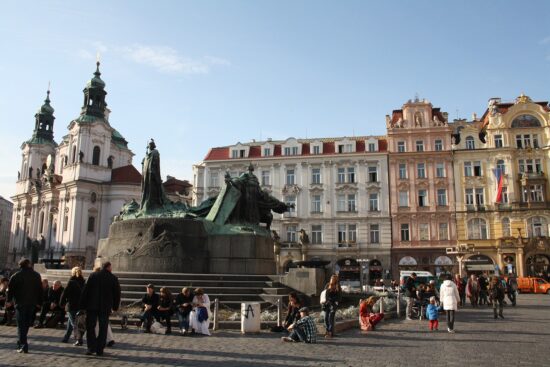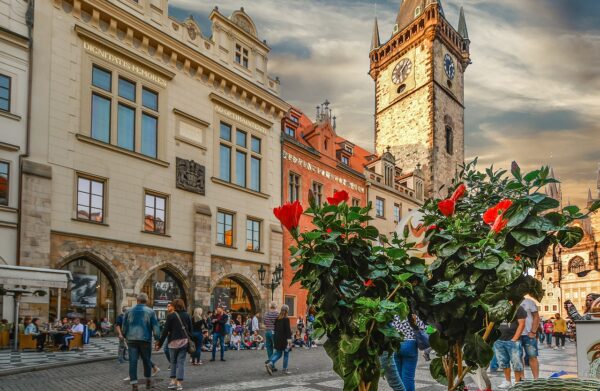Staroměstské náměstí
Staroměstské náměstí is the square that unfolds before the frontal facade of St Nicholas Cathedral and is the heart of Staré Mesto (Old Town) of Prague. Staromestské námestí or the Old Town Square started its long journey in history in the 10th century when a robust marketplace occupied by bakers, potters, manufacturers of wood products, herbalists, gingerbread producers, fishermen, and all kinds of food and vegetable vendors came to pair up with a customs house (the Ungelt, which is an Old German word for customs duty, situated between the Church of St. James and the Church of Our Lady Before Tyn) where foreign merchants brought their goods from all over the world.
Staré Mesto evolved around its marketplace, which was its focal point and heart as was Prague Castle for Mala Strana on the other side of the river. Romanesque houses started circling the central marketplace during the 12th century and Gothic during the 13th, at the beginning of which (in 1230) King Wenceslaus I gave the developing city its formal recognition & royal privileges.
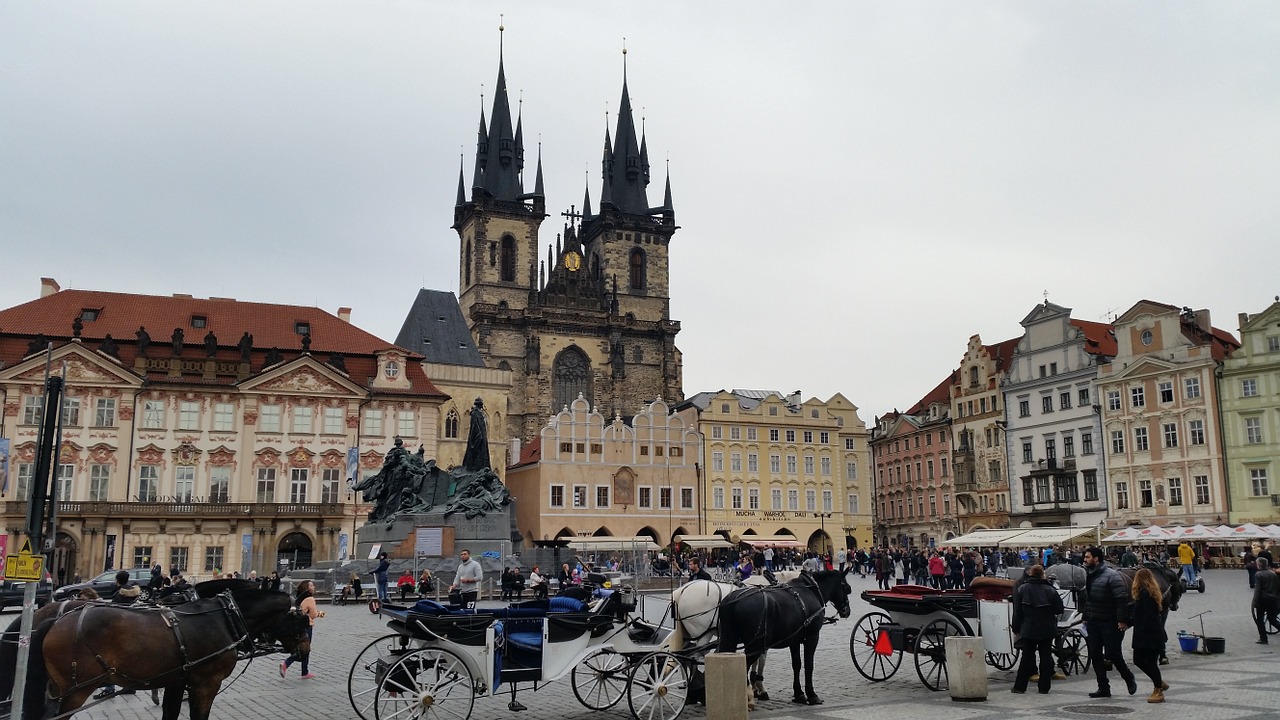
In 1256 a Romanesque Church, the Church of Our Lady before Týn or Kostel Matky Bozí pred Týnem built in the 11th century for the foreign merchants would be reshaped in Gothic style while in 1338 the councilors of the Old Town buy a magnificent patrician house from the Volfin family located on the south side of the square and reshape it to serve as their town hall.
The tower of the Old Town Hall—the highest in the city in the Middle ages—was completed in 1364 and the following centuries hardly left any traces on the structure. A few years later the Church of Our Lady before Týn would start taking its current, Late Gothic form, a transformation that would only be completed in 1511 when the south tower and spires were finished.
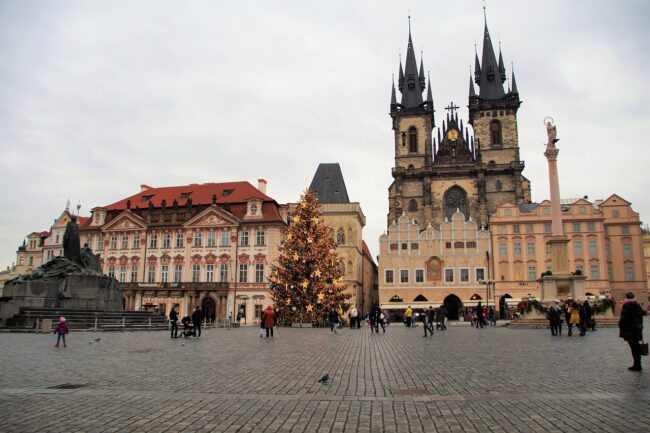
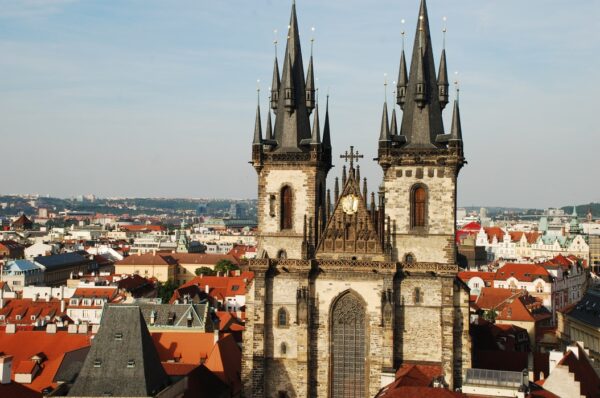
In 1410 the third oldest astronomical clock in the world, the Prague Orloj was first installed on the southern wall of the Old Town Hall with minor additions like the wooden statues and figures of the Apostles in the course of the 17th & 18th centuries. The mechanism was improved again in 1490 by a clock-maker that according to the legend was made blind by the city council to prevent him from constructing another clock somewhere else. Every hour a figure that represents death pulls on a string when at the same time he looks at his other hand, in which he holds an hourglass. Then, two windows open, from where the 12 apostles march.
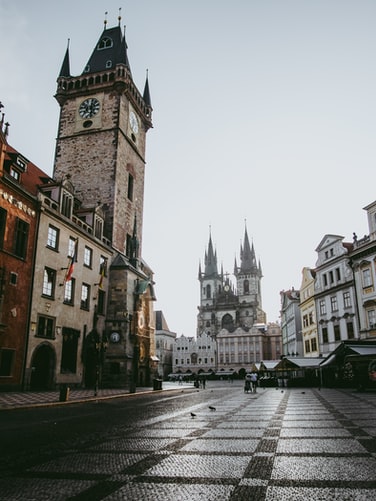

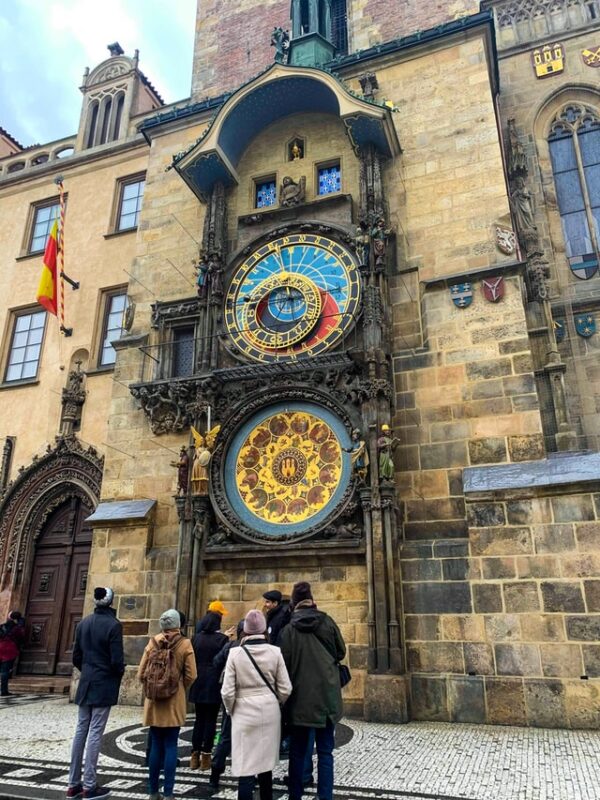
The square carries the heavy historic burden of numerous executions, such as the one of Jan Želivský, the leader of the Prague poor who was beheaded at the well at the town hall courtyard, or the execution of the last Hussite captain Jan Rohác of Dubá and his fellows in 1437. The most resounding of all was of course the one on 21 June 1621 when 27 prominent participants of the Czech revolt against the Habsburgs were executed in front of the Town Hall. Today 27 crosses on the sidewalk along the Old Town Hall are reminders of the tragic event. A legend says that the ghosts of the executed return to the place of their death every year on the 21st of June.
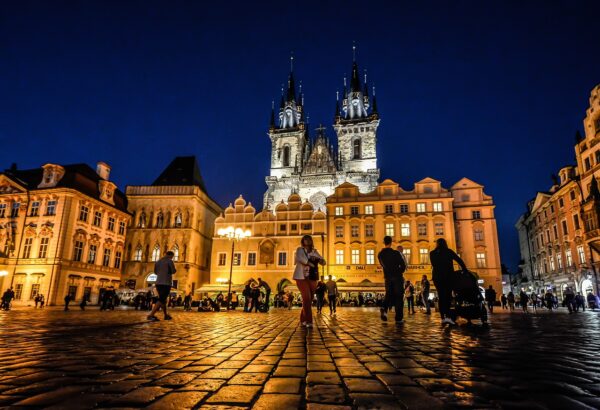

At the center of the square stands a memorial to one of the strongest symbols of Czech national identity. Born in 1369, Jan Hus was a young scholar of the University of Prague that was ordained priest in 1400. He soon started preaching about the demanding need for reformation of the Roman Catholic Church and the moral failings of clergy, bishops, and even the papacy, from his pulpit.
Hus’s ideas became widely accepted in Bohemia, especially after his condemnation by the heads of the Roman Catholic Church. His martyrdom would commence a long period of struggle against the rule of the Catholic Church & the Habsburgs, which many in Bohemia saw as the same thing.
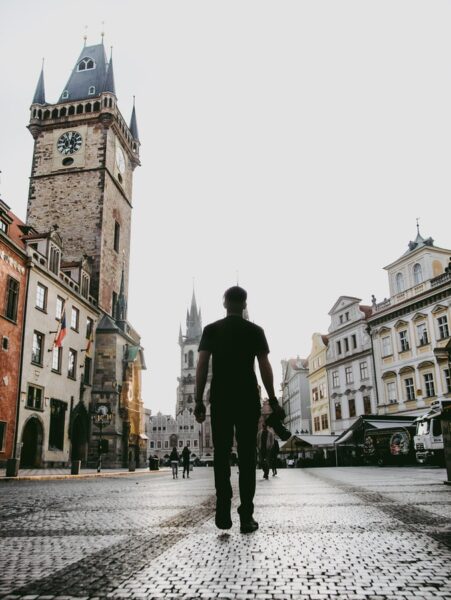
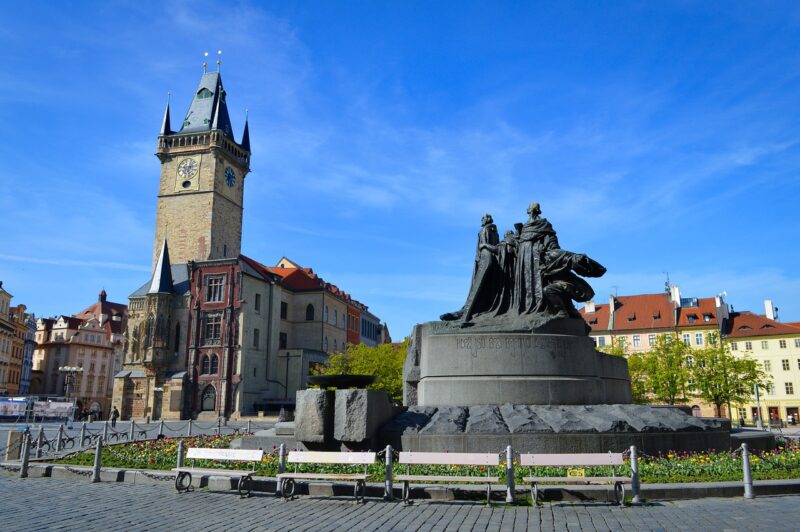
The enormous monument of stone and bronze depicts the martyr above a burning stake, looking towards the main Hussite Church of the Virgin Mary in front of Týn Church. On his right side, behind a shield are people that represent all the people that gave a fight in his name, and on the other side a group of humiliated people, representing the exiles in the period of oppression after the Battle of the White Mountain. The Jan Hus memorial was erected on July 6, 1915, to mark the 500th anniversary of his death.

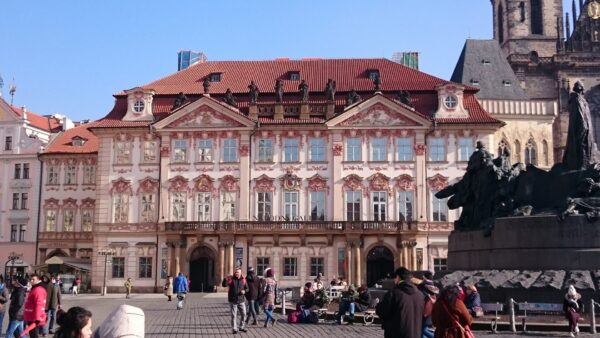
Another piece of the beautiful square ensemble is the white and pink Rococo Kinsky Palace (Palac Goltz-Kinskych). The palace was built between 1755 & 1765 for the powerful noble Jan Arnost Goltz who purchased two hotels that used to stand on the prominent spot. The two hotels were turned into a Rococo palace with two entrances framed with two pillars according to the plans of Kilian Ignaz Dientzenhofer, a prominent architect of the Baroque era.
In 1768 and after the Count’s death another prominent Bohemian noble Stepan Kinský purchased the palace from the Golz’s. His family would keep it until 1945. In 1843 baroness Bertha von Suttner, novelist, poet, editor, and the first woman to be awarded with a Nobel Peace Prize was born in the Goltz-Kinsky Palace.
At the end of the 19th century, the place served as a German grammar school, among others attended between 1893 – 1901 by Franz Kafka whose father owned a small kiosk on the ground floor of the palace. Today the palace hosts collections from the National Gallery. More specifically the permanent exhibition displays the collection of “Landscape in Czech Art from the 17th – 20th centuries”.
On the south side of the square a series of bright-colored Renaissance & Baroque buildings each with its own interesting story complete the ensemble. For a more thorough description of the buildings see here.
